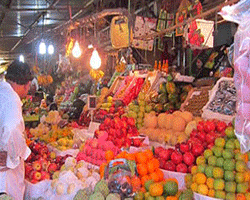Price of consumer products and services slid to 6.46 per cent in September, the lowest level since January 2012, since when the government started compiling national statistics for consumer inflation in India. Although this would not immediately lead to a much awaited rate cut by the country's monetary policy authority RBI, if the moderation in consumer prices is sustained, it could pave the way for easier monetary policy sooner than expected.
India's monetary policy, which was anchored on wholesale price inflation, has been modified with the RBI now chasing a lower consumer inflation as a key yardstick for deciding on policy rates.
Although consumer inflation statistics have been compiled over decades, it was earlier generated for specific categories of workers (industrial workers, rural labourers and urban non manual workers). The government continues to compile inflation data for industrial workers and rural labourers but has replaced urban white-collar workers inflation with a national consumer inflation, which in turn is based on inflation for urban and rural areas.
Early this year in June, retail inflation fell to 30-month low of 7.31 per cent, the lowest since the annual consumer inflation statistics begun to be compiled from early 2012.
RBI, under the new governor Raghuram Rajan, has been holding on to policy rates, despite pressure from both the industry and the government to ease policy to revive investments. However, RBI has been looking for a sustained decline in consumer inflation with a target of bringing inflation down to 8 per cent by January 2015 and 6 per cent by January 2016.
In its fourth bi-monthly monetary policy review late last month RBI has decided to hold policy rates, as widely anticipated, at 8 per cent.
The central bank had noted that since June, headline inflation has ebbed to levels which are consistent with the desired near-term glide path of disinflation. “With international crude prices softening and relative stability in the foreign exchange market, some upside risks to inflation are receding. Yet, there are risks from food price shocks as the full effects of the monsoon’s passage unfold, and from geo-political developments that could materialise rapidly,” it added.
RBI also said the short term risk around the baseline path of inflation are broadly balanced, though with a slant to the downside but for the medium-term objective (6 per cent by January 2016) the balance of risks is still to the upside, though somewhat lower than in the last policy statement.
“This continues to warrant policy preparedness to contain pressures if the risks materialise. Therefore, the future policy stance will be influenced by the Reserve Bank’s projections of inflation relative to the medium term objective (6 per cent by January 2016), while being contingent on incoming data,” it had said.
The fifth bi-monthly monetary policy statement is scheduled on Tuesday, December 2, 2014.
(Edited by Joby Puthuparampil Johnson)





